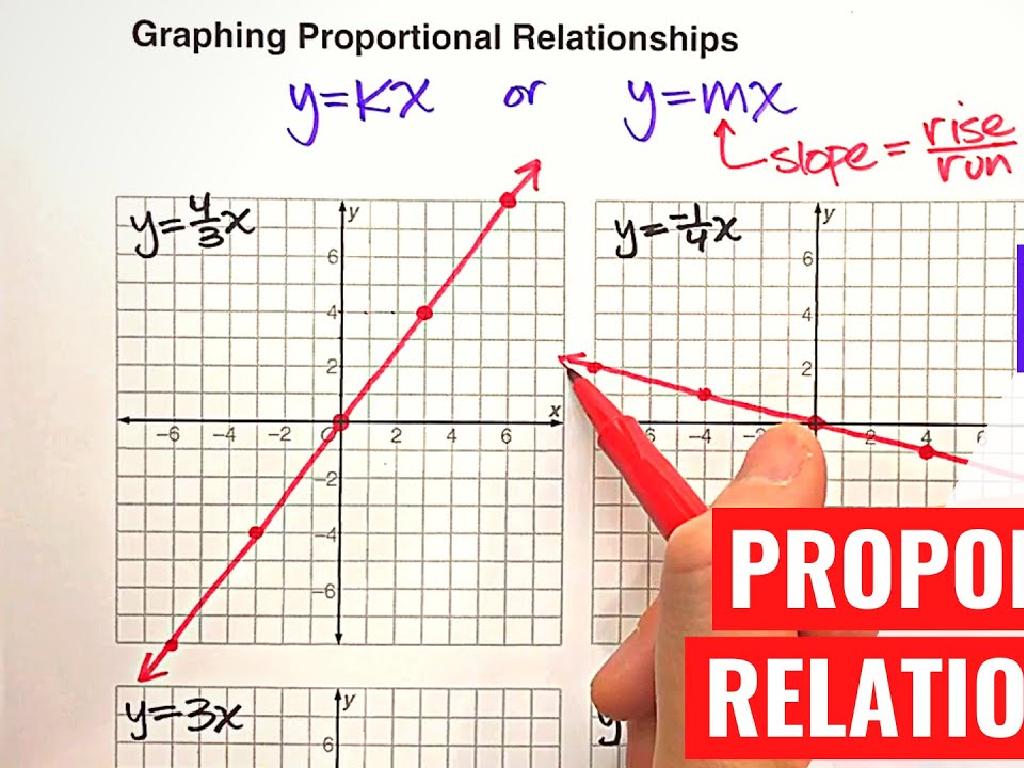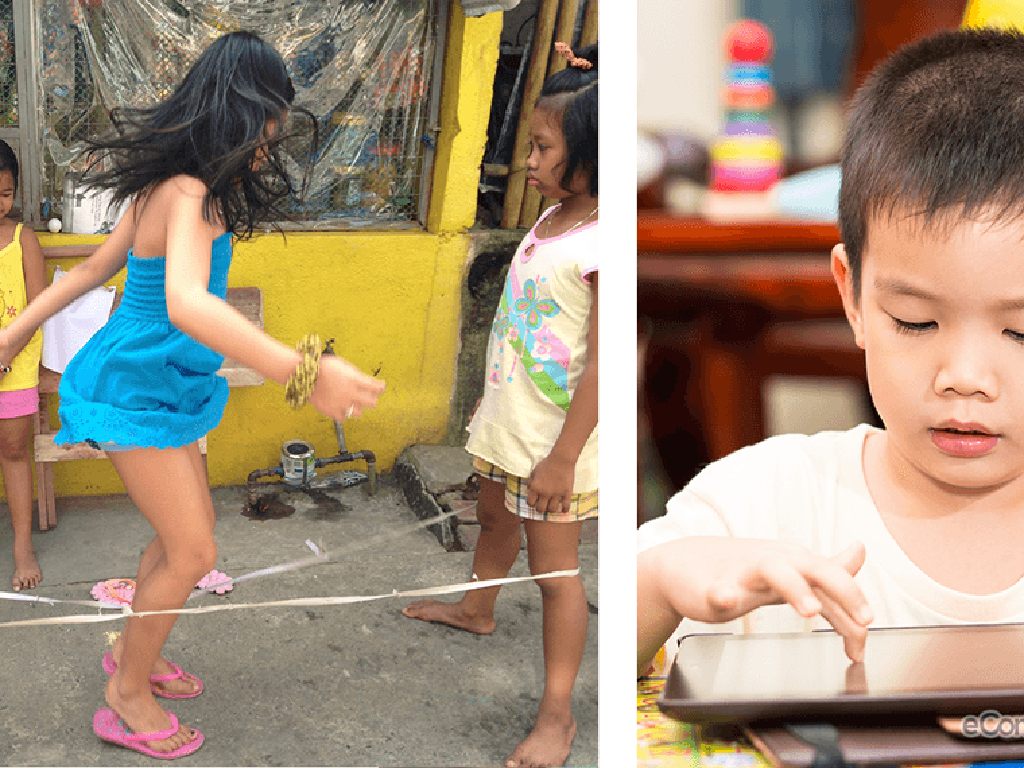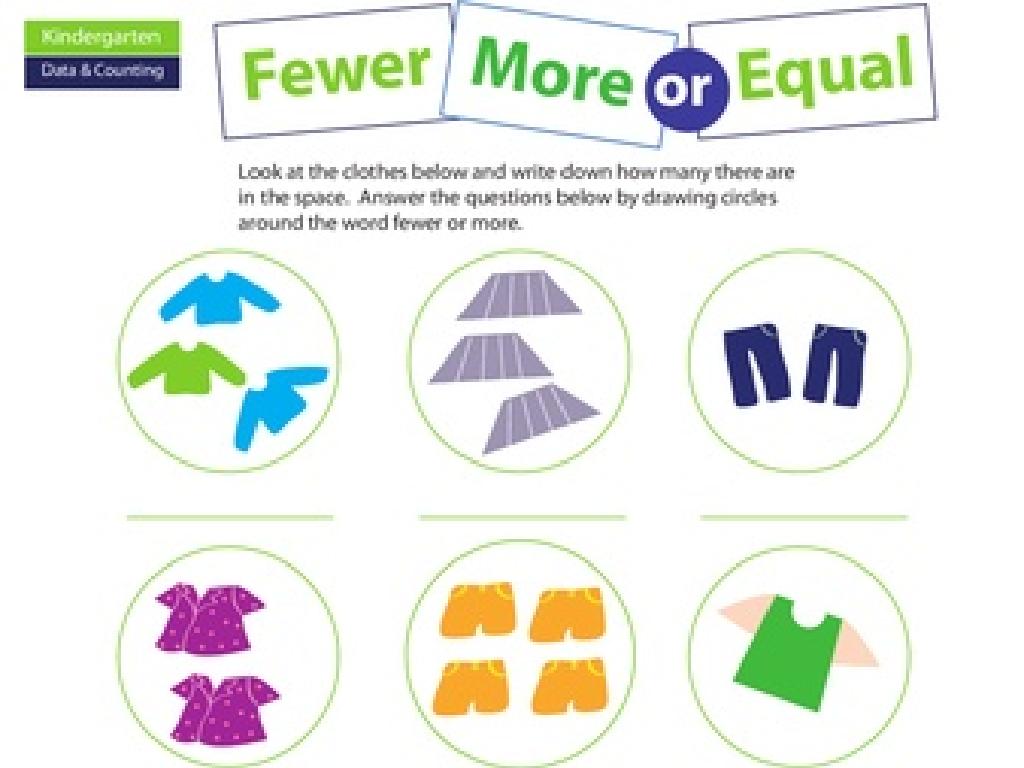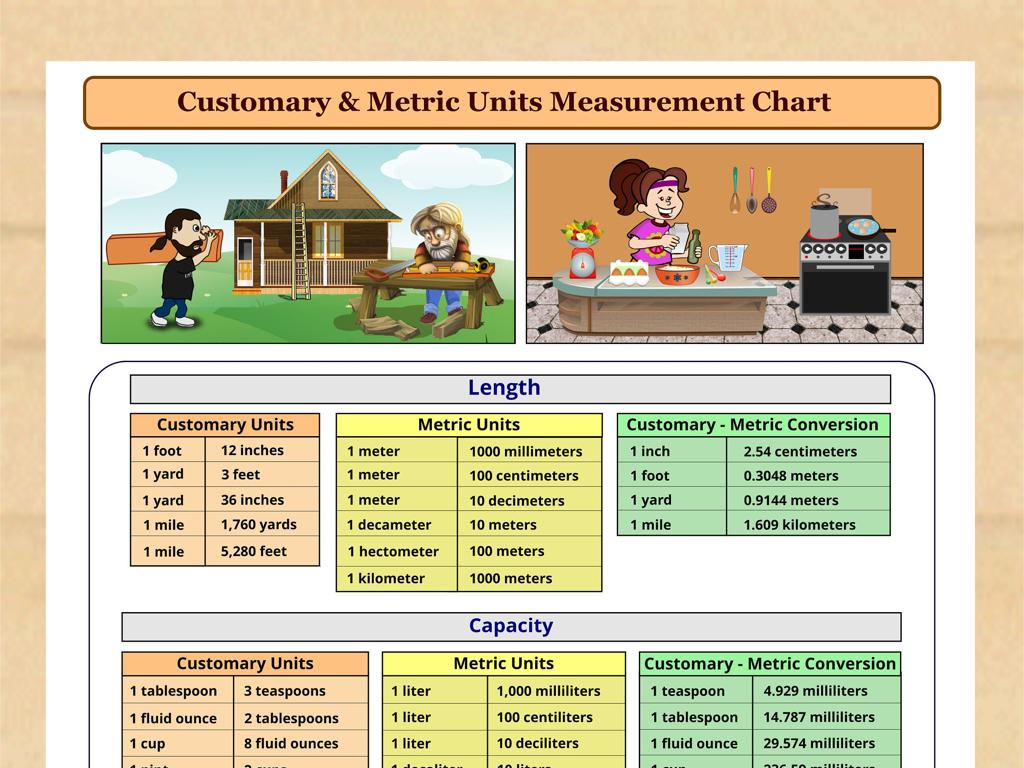Addition Word Problems - Sums Up To 10
Subject: Math
Grade: First grade
Topic: Addition Up To 10
Please LOG IN to download the presentation. Access is available to registered users only.
View More Content
Welcome to Addition!
– Greet the class with enthusiasm
– Today’s focus: learning addition
– Addition combines numbers
– Combining 2 and 3 makes 5
– It helps us count quickly
– Like counting apples faster
|
Begin the class with a warm and cheerful good morning to set a positive tone for the lesson. Introduce the concept of addition as a way to combine numbers, which is a fundamental skill in mathematics. Explain that addition allows us to count things more efficiently than counting one by one. Use tangible examples like combining groups of apples to illustrate how addition works and makes counting quicker. Encourage the students to think of addition as a helpful tool in everyday life, such as when they have a few candies and get a few more, they can add them together to find out how many they have in total.
Understanding Addition: Sums Up to 10
– What is addition?
– Addition means joining things together
– Adding groups together
– If you have 3 apples and 2 apples, put them together
– Finding the total
– Count all the apples to see how many you have now
– The ‘+’ sign
– We use ‘+’ to show we are adding, like 3 + 2 = 5
|
This slide introduces the basic concept of addition to first graders. Start by explaining that addition is the process of combining two or more groups of things to find out how many there are altogether. Use tangible examples, such as combining groups of fruits or toys, to illustrate the concept. Show them the addition sign ‘+’ and explain that it tells us to put groups together. Encourage students to practice by using physical objects to add up to 10, and to visualize the process of combining groups to find a total. Reinforce the concept by having students use the ‘+’ sign in simple math problems and count the total number of items.
Let’s Count Together!
– Practice counting to 10
– Counting leads to addition
– Counting sets the foundation for learning addition by understanding that adding is counting on.
– Use objects for counting
– Use toys, fruits, or fingers to visualize numbers and make counting tangible.
– Counting is fun and easy
|
This slide is aimed at helping first graders grasp the concept of addition through counting. Start by engaging the students in a fun counting activity using objects they can relate to, such as toys or fruits. Emphasize that counting is not just reciting numbers but understanding the quantity each number represents. Explain that addition is simply the process of counting forward from one number to another. For example, if we have 3 apples and we add 2 more, we count on from 3: 4, 5. Now we have 5 apples. Encourage the students to use their fingers or objects around them to practice counting, making the learning process interactive and enjoyable.
Adding with Pictures
– Use pictures for addition
– Pictures can represent numbers to make adding fun!
– Count items in pictures
– If there are 3 apples and 2 apples in the picture, count them all.
– Add items together
– After counting, combine the totals to find the sum.
|
This slide introduces the concept of using visual aids to help first graders understand addition. By using pictures, students can physically see the items they are adding, making the abstract concept of addition more concrete. Encourage students to count items one by one and then add the groups together to find the total sum. For example, if there are pictures of 3 apples and 2 apples, students should count each group and then add the two numbers together to find that 3 apples plus 2 apples equals 5 apples. This method helps to solidify the concept of addition by providing a visual and tangible way to combine quantities.
Our First Addition Word Problem
– Word problems are number stories
– Read the problem as a group
– Find the solution step by step
– We’ll use counting and addition to solve
– Practice with an example
– Example: If you have 3 apples and get 2 more, how many do you have now?
|
This slide introduces first graders to the concept of addition word problems, emphasizing that these problems are like stories that involve numbers. Start by reading the problem out loud together, which helps students understand the narrative aspect of word problems. Then, guide them through the process of identifying the numbers involved and the action (in this case, addition) to find the solution. Use simple, relatable examples, such as combining groups of familiar objects like apples, to illustrate the concept. Encourage students to visualize the problem and use their fingers or objects to count and add. The goal is to make them comfortable with the idea of translating a story into a mathematical equation that can be solved.
Adding Balloons Together!
– Count red balloons
– Tom has 3 red balloons
– Count blue balloons
– Tom has 2 blue balloons
– Add balloons together
– 3 red + 2 blue = 5 balloons
– Use pictures to help solve
– Draw balloons to visualize
|
This slide introduces students to addition word problems with sums up to 10. Start by reading the problem about Tom’s balloons aloud. Ask the students to visualize and count the red balloons, then the blue balloons. Guide them through the process of adding the two groups of balloons together to find the total. Encourage the use of pictures to represent each balloon, which helps in visualizing the problem and makes addition concrete for first graders. This activity will help students understand that addition is combining two sets of items to find out how many there are altogether. For the activity, provide students with drawing materials or balloon cut-outs to create a visual representation of the problem.
Try It Yourself: Addition Word Problems
– Read the word problem aloud
– Count objects or draw to solve
– Use fingers or drawings to add numbers up to 10
– Write down the addition sentence
– Example: 3 apples + 2 apples = ?
– Check your answer by counting
– Make sure the sum does not exceed 10
|
This slide is an interactive activity for students to practice solving addition word problems on their own. Encourage them to read the problem out loud to improve comprehension. Students should use visual aids like counting on fingers or drawing objects to find the solution. They will then write the corresponding addition sentence, reinforcing the connection between the problem and the mathematical expression. Finally, remind them to double-check their work by recounting. For the teacher: Prepare to walk around the classroom to assist students who may struggle and to confirm correct answers. Offer praise for effort and correct answers to build confidence.
Adding with Our Fingers
– Use fingers for addition
– Each finger is a number
– Hold up 1 finger for 1, 2 fingers for 2, and so on
– Add numbers up to 10
– Combine fingers from both hands to make sums
– Practice with examples
– Try 3 fingers on one hand and 2 on the other. What’s 3 + 2?
|
This slide introduces students to the concept of using their fingers as a visual and tactile tool for addition, which is especially effective for young learners. Encourage students to physically use their fingers to count and add numbers together, ensuring they understand that each finger represents one unit. Start with smaller numbers and gradually increase to sums up to 10. Provide several examples and allow the students to practice adding different combinations of fingers. This method helps solidify the concept of addition and provides a concrete strategy for solving addition problems.
Class Activity: Addition Scavenger Hunt
– Explore the classroom for items
– Count each item you find
– Add up the totals with a friend
– Combine your counts and find the sum
– Use your addition skills
– Practice adding numbers up to 10
|
This interactive activity is designed to help first graders apply their addition skills in a fun and engaging way. Students will pair up and search the classroom for various items, counting each group of items they find. They will then work together to add the numbers, ensuring the sums do not exceed 10. This activity promotes teamwork, practical application of math skills, and movement around the classroom. As a teacher, facilitate the activity by providing guidance and ensuring each pair has different items to count to avoid repetition. Possible variations include: 1) Counting and adding different colored objects, 2) Finding items that start with a certain letter and adding them, 3) Adding the number of windows to the number of doors, and 4) Counting and adding the number of books on different shelves.
Great Work on Addition!
– Celebrate your adding skills
– Addition combines groups
– Like combining toy cars from two boxes
– Total tells us ‘how many’
– If we have 3 apples and 2 more, we have 5 in total
– Practice to become perfect
|
This slide is meant to congratulate the students on their hard work during the lesson on addition. It’s important to reinforce the concept that addition is about combining groups and finding the total number. Use tangible examples like toys or apples to illustrate the point. Encourage the students to continue practicing addition outside of class to improve their skills. You can suggest simple addition activities they can do at home, like adding the number of forks and spoons on the dinner table or counting the total number of storybook pages they read with their parents.






